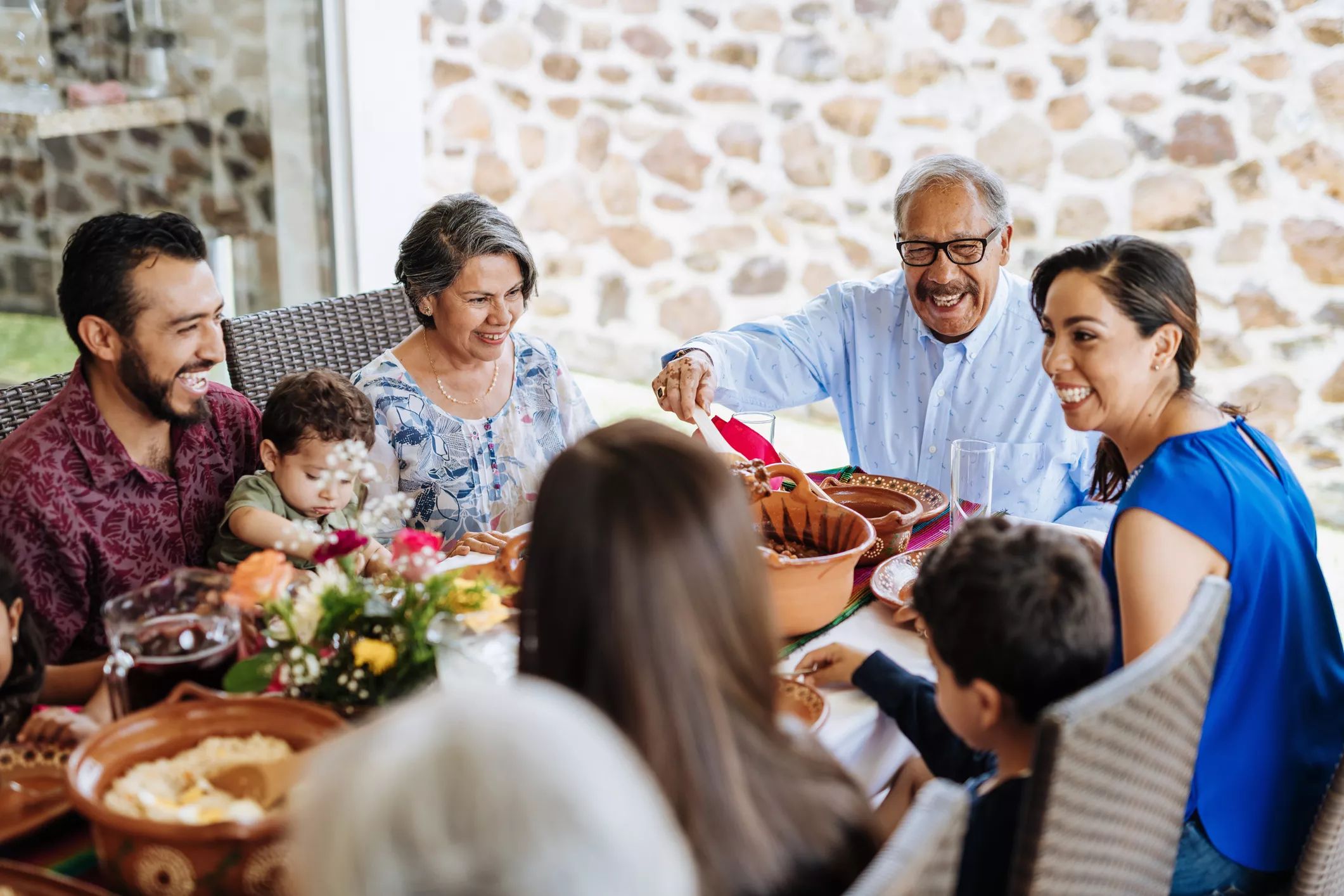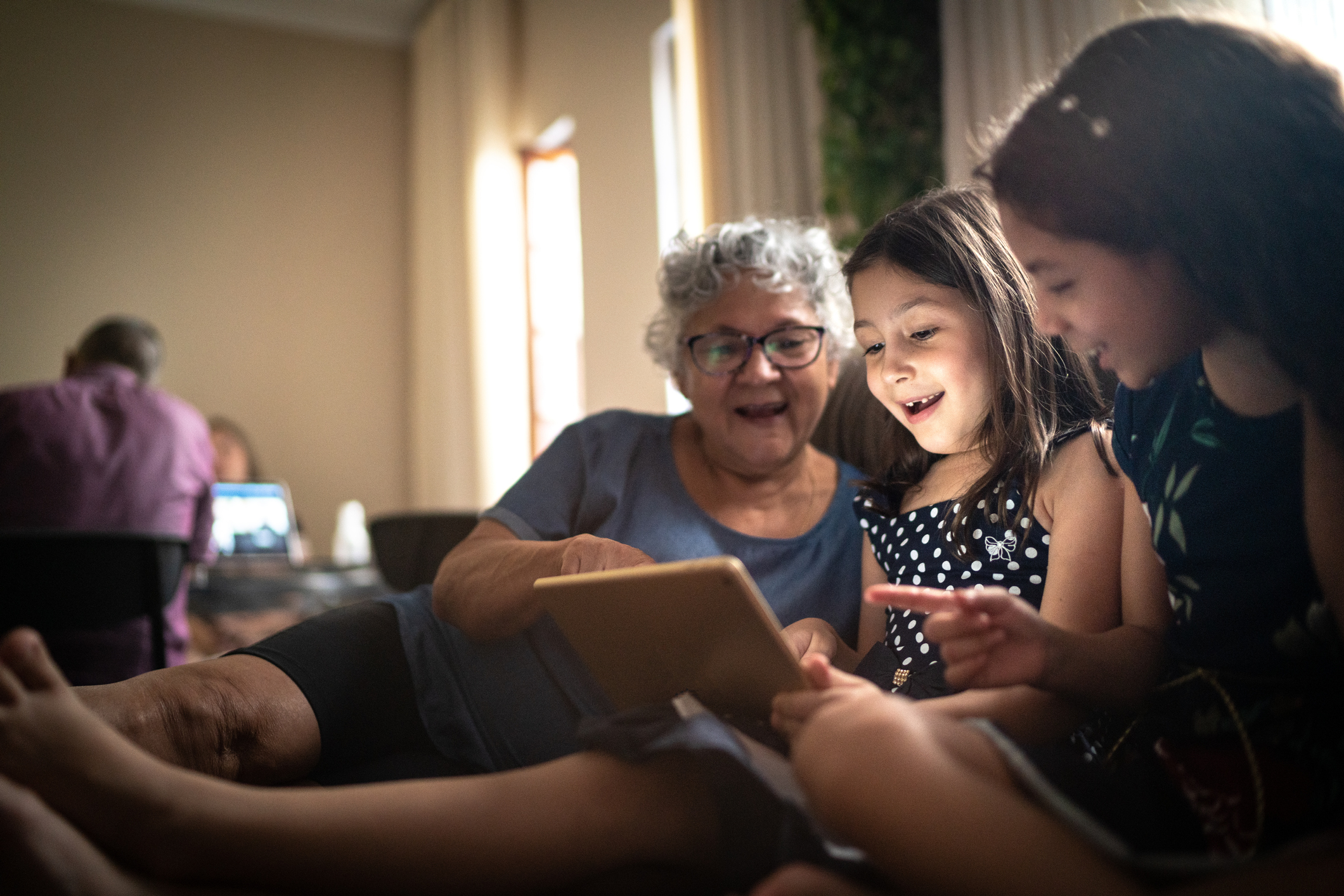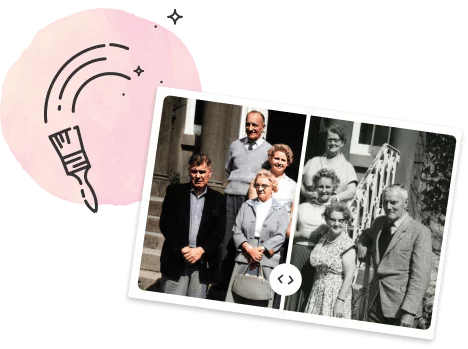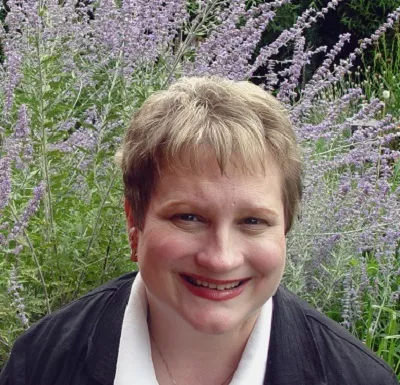
Family gatherings — such as holidays, lifecycle events, and reunions — are perfect opportunities to collect information for your family history research. You can interview relatives you don’t get to see often, ask questions to help fill in gaps in your family tree, and update your tree with new developments, such as births and marriages. Simply chatting with your relatives may even yield interesting details and anecdotes you wouldn’t have thought to ask about.
In this article, we’ll explore how to prepare to gather genealogical information at family gatherings and provide some tips and advice on getting the most out of the event to enhance your family history research.
Preparing ahead
It’s a good idea to prepare ahead of time so you can stay focused, achieve your genealogy-related goals efficiently, and spend the rest of the gathering simply enjoying your time together with your relatives.
Here are some ways to prepare:
- Take a look at your tree and identify any gaps in information that somebody you’ll be seeing at this gathering might be able to fill in. You can make a list of questions to ask various family members who may be attending.
- If possible and relevant, ask family members if they can bring photo albums or other memorabilia you haven’t seen or documented to the gathering.
- Pack some equipment for recording genealogy information, whether it’s a notebook, an audio recorder, a laptop, or your phone. The MyHeritage mobile app is perfect for taking quick notes and recording audio, and the Reimagine app is handy for scanning photos quickly.
- Bring along some of your work, whether it’s a printout of your family chart, an album of colorized and enhanced family photos, or a collection of Deep Nostalgia™ animations of your ancestors. These can be a great conversation starter and help your family members understand what you’ve been up to. Improved and animated family photos can be especially helpful for engaging younger family members and getting them interested in your work.

Making the most of the gathering
Approaching the topic
As the family genealogist, you may be very eager to jump right in and get your questions answered immediately. Don’t let your excitement get in the way of common courtesy! Make some small talk and get settled in before easing into the topic of genealogy. You don’t want to give your relatives the impression that you care more about your research than about seeing them!
Interviewing relatives
Once you’ve introduced the topic of genealogy and have your relatives talking, you can ask them the questions you prepared ahead of time, or simply encourage them to tell you what they know or remember about your topic of interest. Looking at old family photos together may help jog their memories and coax out stories you haven’t heard before. You can read more about interviewing your relatives for genealogy here: How to Interview Your Relatives for Family History Research

Documenting details
Don’t rely on your memory to hold on to information and details. Make sure to record everything in whatever way you can. Some prefer to work the old-fashioned way and take handwritten notes, but you may find it easier to enter information straight to your MyHeritage tree. You can easily do this using the MyHeritage mobile app. If the gathering is taking place somewhere that doesn’t have mobile coverage, or if you prefer to use your laptop and aren’t confident you’ll have wifi, you can always use Family Tree Builder and sync it with your online tree later.
Audio recording
There are many advantages to recording information on audio: it’s hands-free and doesn’t interfere with the flow of conversation as taking notes might. Plus, having the recording could be very valuable later on when that relative isn’t around anymore. Being able to hear a relative telling family stories in their own voice is priceless.
On the other hand, it may not actually save you work. You might have to transcribe and enter the information from the recording manually later. More importantly, family gatherings are not ideal settings for recording a person speaking! You may be able to solve the latter problem by taking your relative aside into a quiet room, but that’s assuming such a room will be available.
If you do decide to utilize audio recording, once again, the MyHeritage mobile app can help with this, as you can record audio directly onto a person’s profile in the tree. You can also use the Photo Storyteller™ feature to record a relative telling the story behind family photographs in your MyHeritage album. That brings us to the next item:
Scanning photos and documents
If the gathering presents an opportunity to take a look at some photos or documents you haven’t seen before, you won’t want to waste this chance to scan them. This will be easy to do if you scan them using your mobile device — and you can do this right from the MyHeritage app, too. See the following article for tips on scanning photos for genealogy: How to Digitally Scan Old Pictures Using MyHeritage
Take new family photos
Don’t pass up this opportunity to get some great photos of your relatives to upload to MyHeritage! You can take individual photos to fill in missing profile photos in your tree as well as group photos.

Processing and organizing after the gathering
It’s a good idea to block off some time shortly after you return from the gathering to process your notes, recordings, and scans and input them into your tree while your memory of these conversations is still fresh. Enter any details you uncovered into your tree, transcribe the parts of your recordings you think are important, and upload and tag your photos and documents.
Then, you can use what you gathered to move forward with your research. Perhaps a new Record Match will pop up because of a new date or place you were able to add to a profile? Maybe a new face in a photo you scanned will give your research a new direction? Explore the possibilities and enjoy!




